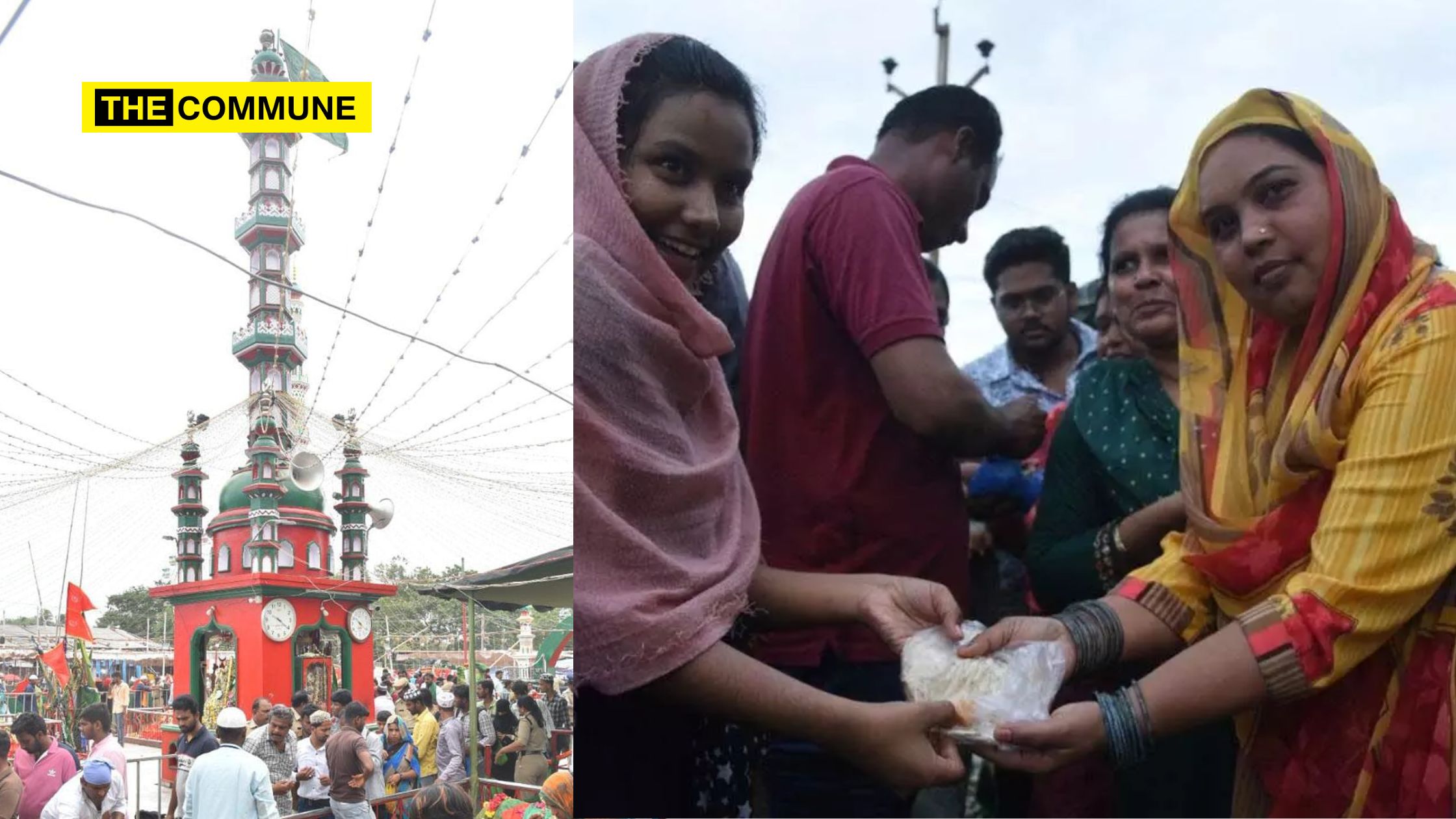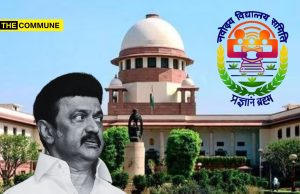
During the Islamic invasions across various parts of the country, the deaths of invaders were often documented as acts of martyrdom. In their memory, tombs were frequently converted into mosques. Sometimes, existing temples were transformed into mosques, or new structures were built to assert dominance. One such structure is the Bara Shaheed Dargah in Nellore.
Despite the lack of authentic references or historical evidence, popular stories often glorify the Muslim invaders. The Bara Shaheed Dargah, situated beside a lake in Nellore town of Andhra Pradesh, gains significant attention annually following the Muharram festival. This coincides with the celebration of ‘Rottela Panduga,’ a popular event where ‘Rotella’ (the Telugu plural of ‘Roti’) plays a central role. The Muslim lobby successfully convinced the then-Andhra Pradesh government in 2015 to declare it a state festival. Since then, the event has drawn lakhs of Muslims and non-Muslims not only from Andhra Pradesh but also from Tamil Nadu, Karnataka, and other states.
However, a definitive history directly related to the Bara Shaheed Dargah, where this Rottela Panduga takes place, has not yet been found. Some alternative stories are currently being promoted locally, raising doubts about the authenticity of the actual history of Bara Shaheed Dargah.
According to local folklore, the origin of Bara Shaheed Dargah is steeped in legend. One account suggests that twelve Islamic preachers from Turkey arrived in India to spread Islam through Tablighi (Da’wah-proselytizing). Their journey brought them to Gandhavaram, where they faced resistance from the locals. This resistance escalated into a battle, resulting in the death of the twelve Islamists. The current dargah stands as a memorial at the site where they were killed.
Another version suggests that during the Carnatic Wars in 1751, the Nawab of Arcot enlisted a regiment from Turkey to aid in the conflict against the British. Among these soldiers were twelve deeply religious individuals, performing Namaz five times daily and observing all tenets of their Islamic faith. Although their regiment emerged victorious, twelve Islamists were beheaded by opposing forces during the battle at Gandavaram, situated 15 km from Nellore. Their headless bodies were returned to Nellore atop the very horses they rode into battle, and they were laid to rest at the site where the present-day Dargah stands. To commemorate their sacrifice, a Dargah was built in the area, which became known as Bara Shaheed Dargah in honor of the twelve martyrs.
Therefore, the shrine is named ‘Bara Shaheed Dargah,’ where ‘Bara’ signifies twelve and ‘Shaheed’ denotes martyrs. According to local lore, the reputation of the twelve soldiers as miracle workers grew when the Nawab of Arcot’s wife reportedly recovered from a serious illness after praying at their tombs.
‘Rot Festival’ Or ‘Rottela Panduga’
Since the Dargah was built, Muslims have gathered there on ‘Moharram’ and shared rotis with each other the following day. Soon, a tradition emerged that distributing rotis at the Dargah was believed to bring blessings to both the giver and the recipient.
As a gesture of reverence, the queen, accompanied by the Nawab, distributed rotis among the local Muslims and subsequently to the local non-Muslims. Since then, Muslims have gathered at the Dargah on the 12th day of the Muharram month to continue the tradition of sharing rotis. The exchange of these rotis occurs at Nellore tank, also known as ‘Swarnala Cheruvu’, situated near the Dargah.
Slowly, Hindus began attending the Dargah, believing it to be a sacred place and hoping that offering food there would bring them luck as well. The story of the Dargah’s purported blessings became widely popular. Unaware of the Islamic invaders’ history and its implications, Hindus joined in these rituals, anticipating that it might bring them good fortune. In recent decades, this belief was heavily publicized, attracting a large number of people from nearby areas.
Capitalizing on this food-sharing activity, roti vendors with motives of huge profits started innovative and customized methods by branding the rotis according to the devotees’ wishes. Rotis are named Sowbhagya (good fortune) roti, Vidya (education) roti, Udyoga (employment) roti, Vivaha (marriage) roti, Santana (children) roti, Dhana (money) roti, and even Visa roti.
Shia Origins Of Bara Shaheed Dargah
The Roti festival, observed the day after the Muharram festival, along with the historical association of Arcot Nawabs with the shrine and the tradition surrounding the death of 12 Shia Muslims, strongly suggests the Shia origins of this shrine. The Arcot Nawabs represented three distinct lineages: Zulfikar Khan and Daud Khan Panni, who were initially appointed by Aurangzeb, followed by the Nawayati Nawabs. In the 1740s, the Wallajah line of Nawabs emerged. The early Nawabs adhered to the Shia branch of Islam, while the later Nawabs followed Sunni Islam.
History Of Muharram
The Battle of Karbala occurred on 10 October 680 CE (10 Muharram, 61 AH in the Islamic calendar). It was fought between the forces of the second Umayyad Caliph, Yazid I, and a small army led by Husayn ibn Ali, the grandson of the Islamic Prophet Muhammad, at Karbala in present-day Iraq.
After the battle, the family members of Imam Husayn were taken as prisoners of war. They were shackled and forced to march barefoot from Kufa to Damascus. During this arduous journey, several young children died due to the harsh conditions and ill-treatment. The captives were paraded through various towns, facing humiliation and assault from onlookers. Yazid ordered the city to be decorated, and jubilant crowds gathered to celebrate the capture of the prisoners. In Damascus, the heads of Imam Husayn and his companions were publicly displayed and subjected to further humiliation. The family of Imam Husayn was paraded through the marketplace, where some historians report that bystanders attacked them with stones, rubbish, and even hot water. This episode is considered one of the most tragic chapters in Islamic history, given the profound respect for the Prophet Muhammad’s (SAW) family.
A memorial to the 12 martyrs of Shia Islam was constructed at the Umayyad Mosque in Damascus, Syria. Inside the memorial, cloth bundles representing the heads of the martyrs are displayed. The beheading of the martyrs of Karbala and the subsequent transportation of their severed heads to Damascus in 680 CE has inspired local folklore surrounding the Bara Shaheed Dargah in Nellore, Andhra Pradesh. The story of the martyrs’ heads falling at the present location echoes the events following the Battle of Karbala.
12 Martyrs’ Memorial In Damascus – Niche For Imam Hussain’s Head In Mosque
The exchange of a special type of biscuit called ‘Rot’ during Muharram is a longstanding tradition in the Indian subcontinent. This custom has evolved into the festival known as ‘Rottela Panduga’. The practice of exchanging ‘Rot’ by devout Muslims during Muharram underscores the connection between the legend of the Bara Shaheed Dargah and the Battle of Karbala, particularly the beheading of the martyrs. The celebration of ‘Rottela Panduga’ a day after the Muharram mourning period indicates an attempt to link local events with the Battle of Karbala and the martyrdom of the 12 Shia martyrs, despite the absence of documented historical evidence.
(This article was originally published in Dakshinapatha and republished in Arise Bharat)
Subscribe to our channels on Telegram, WhatsApp, and Instagram and get the best stories of the day delivered to you personally.




